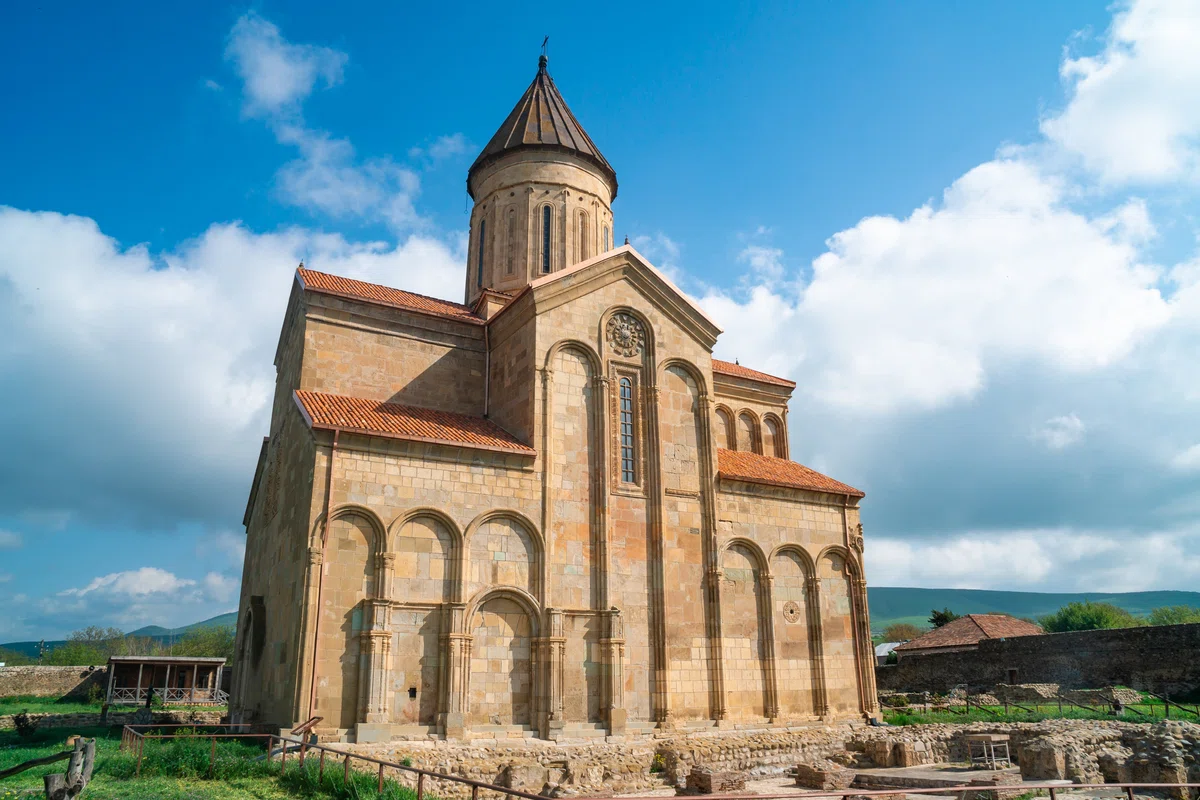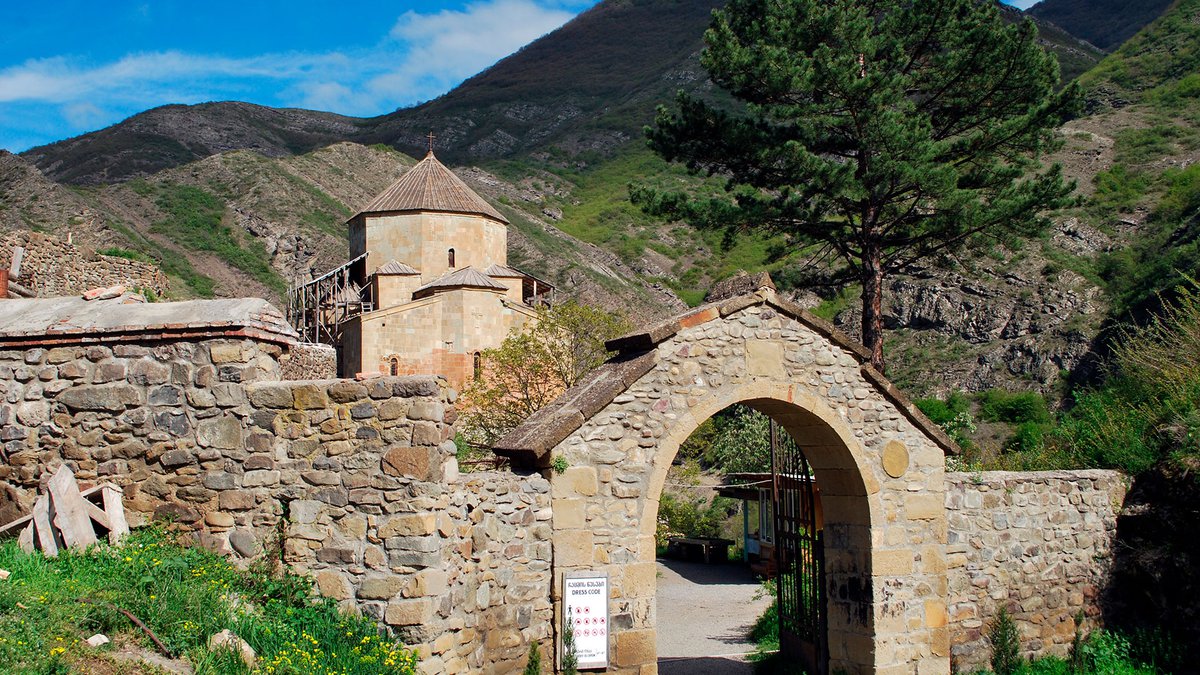
Big old Georgian temples that are worth paying attention to. Samtavisi and Athenian Sioni.
Samtavini is a cathedral and has survived to this day in good condition. The territory of the complex was surrounded by a fence, and on the territory, unfortunately, only the ruins of the bishop's palace have been preserved. Unfortunately, the fresco painting has reached us only in the altar part. Athenian Sioni attracts by the fact that it is built of colored squares: greenish-gray. Unique inscriptions from different times can still be found on the walls of Sioni.

Samtavisi is a cathedral. It was built on the place where in the VI century one of the Syrian fathers, Isidore of Samtavis, erected the first church.
The territory of the Monastery complex is surrounded by a fence. In addition to the main temple, the ruins of the bishop's palace and the bell tower (XVII century) remain on the territory. The inscription of the eastern facade of the temple mentions the builder of the temple and the first bishop Hilarion Kancheli. In the XV century. the badly damaged temple was restored. Restoration work was carried out here in the XIX century . The fresco painting in the interior has been preserved only in the altar part. There are many carved ornaments and decorative compositions in the cathedral. Samtavisi Temple begins a new stage in Georgian architecture, which was developed in Georgian architecture in the XII-XIII centuries.
Ateni Sioni is located 12 kilometers from Gori, near the village of Ateni, on the right bank of the Tani River. The temple, built in the VIII century., is a cross-domed structure of the tetraconch type (24x19m., height 22 m.) and is built of greenish-gray hewn limestone squares. On the walls of the Athenian Sioni there are unique inscriptions and inscriptions of different times in the ancient Georgian alphabet "asomtavruli", which mention historical figures, etc., contain dates and other information. The inscriptions are also remarkable in terms of the history of the language and the development of writing. The temple was painted completely in the second half of the XI century . According to the manner of writing and technical means, the artistic methods of several artists differ.













37 comments
Log in to leave a comment